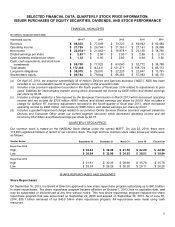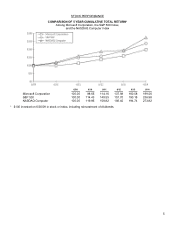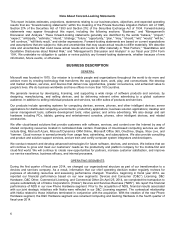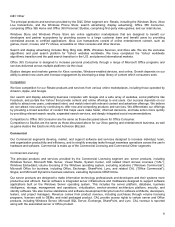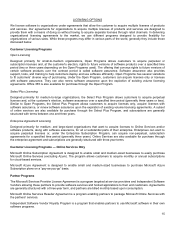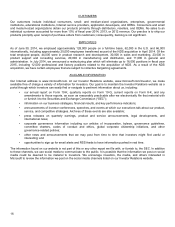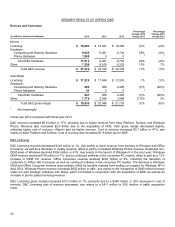Microsoft 2014 Annual Report Download - page 13
Download and view the complete annual report
Please find page 13 of the 2014 Microsoft annual report below. You can navigate through the pages in the report by either clicking on the pages listed below, or by using the keyword search tool below to find specific information within the annual report.
12
OPERATIONS
We have operations centers that support all operations in their regions, including customer contract and order processing,
credit and collections, information processing, and vendor management and logistics. The regional center in Ireland
supports the European, Middle Eastern, and African region; the center in Singapore supports the Japan, India, Greater
China, and Asia-Pacific region; and the centers in Fargo, North Dakota, Fort Lauderdale, Florida, Puerto Rico, Redmond,
Washington, and Reno, Nevada support Latin America and North America. In addition to the operations centers, we also
operate data centers throughout the Americas, Europe, and Asia regions.
To serve the needs of customers around the world and to improve the quality and usability of products in international
markets, we localize many of our products to reflect local languages and conventions. Localizing a product may require
modifying the user interface, altering dialog boxes, and translating text.
Our Xbox consoles and games, Surface devices, and Microsoft PC accessories are manufactured by third party contract
manufacturers. We generally have the ability to use other manufacturers if the current vendor becomes unavailable or
unable to meet our requirements.
With the acquisition of NDS, we now operate manufacturing facilities for the production and customization of phones in
Brazil, China, Hungary, Mexico, and Vietnam.
All our devices may include key components that are available from only one or limited sources. Disruption of component
supply from these suppliers could potentially lead to a disruption of production of certain devices.
RESEARCH AND DEVELOPMENT
During fiscal years 2014, 2013, and 2012, research and development expense was $11.4 billion, $10.4 billion, and
$9.8 billion, respectively. These amounts represented 13% of revenue in each of those years. We plan to continue to
make significant investments in a broad range of research and development efforts.
Product and Service Development and Intellectual Property
We develop most of our products and services internally through four primary engineering groups.
• Applications and Services Engineering Group, focuses on broad applications and services core technologies in
productivity, communication, search, and other information categories.
• Cloud and Enterprise Engineering Group, focuses on development of Microsoft’s back-end technologies like
datacenter, database, and our specific technologies for enterprise IT scenarios and development tools. This
group also engineers datacenter development, construction, and operation.
• Devices Engineering Group, focuses on all hardware development and supply chain, including Xbox consoles,
Surface devices, Lumia Smartphones, other non-Lumia phones, Perceptive Pixel products, and accessories.
• Operating Systems Engineering Group, focuses on Microsoft’s operating systems for consoles, mobile devices,
PCs, and back-end systems. Studios and Universal Store, the core cloud services for marketplaces,
membership, and commerce platform, are also in this group.
Internal development allows us to maintain competitive advantages that come from product differentiation and closer
technical control over our products and services. It also gives us the freedom to decide which modifications and
enhancements are most important and when they should be implemented. We strive to obtain information as early as
possible about changing usage patterns and hardware advances that may affect software design. Before releasing new
software platforms, we provide application vendors with a range of resources and guidelines for development, training,
and testing. Generally, we also create product documentation internally.



